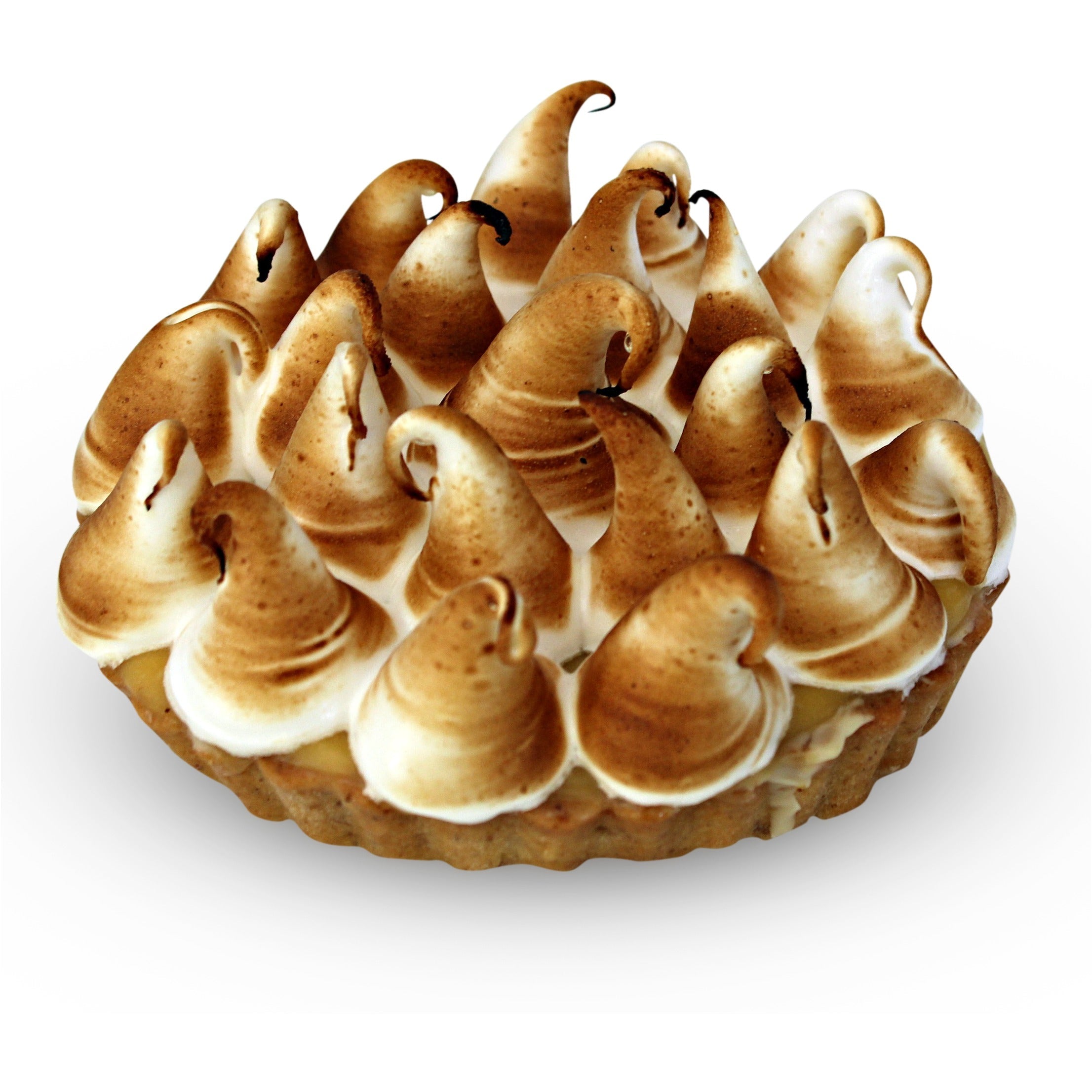
Dairy 27 Jan 22- About Pavlova
Diary 27 Jan 22 - About Pavlova
Yesterday was a holiday here in Australia. Our family came together for a meal and we enjoyed Dello Mano Pavlova for dessert.
We're often asked for the best Pavlova making tips, so here are a few commonly asked questions and answers.
What is the history of Pavlova?
Pavlova is one of Australia's most popular desserts. There is an ongoing debate between Australia and New Zealand as to who invented the Pavlova.
One thing is agreed and that is that the Pavlova was created to celebrate a ballerina. A famous Russian Ballerina called Anna Pavlova . She was a prima ballerina for the Imperial Russian Ballet in the late 19th and early 20th century. Known most widely for her creation of the "dying swan". She was the first female ballerina to tour having created her own company. An amazing feat for back then - she travelled among other places to Australia, New Zealand, India and South America.
Legend has it (if you are on the Australian side of this debate) that the Pavlova was created in her honour by an Australian chef at the Esplanade Hotel in Perth, Australia. Debate still rages on Pavlova recipe provenance. New Zealand also claims ownership of the Pavlova invention. According to the later theory a Pavlova recipe was first published in a regional New Zealand publication known as Dairy Farmers Annual.
Follow a few simple rules using your Pavlova recipe and success awaits.
Is Pavlova meant to be sticky in the middle?
In some camps the Pavlova should have a dry crust but be a sticky, marshmallow in the centre, Others say the Pavlova should be dry and crusty the whole way through. Technically Pavlova should have the soft centre.
At Dello Mano we previously made a Pavlova with a soft marshmallow centre however have found more people enjoy the crustier style. Pavlova is most popular in the hotter summer months of Australia. We find the crisper meringue style Pavlova is more versatile and stands up better especially for outdoor BBQs and parties.
How do I know when my Pavlova is cooked?
A cooked Pavlova should look dry and crispy on the outside. It should be just pale ( anything darker is over cooked) in colour. If you're making a mashmallow style Pavlova you can insert a skewer to see if it is dry or wet before removing from the oven
Is vinegar used to make Pavlova?
An acidic ingredient is often used in Pavlova to stabilise the meringue and prevent it from collapsing. Using lemon juice or white wine vinegar will ensure that your meringue stands up strong.
Cream of Tartar is also often used to make Pavlova. It stabilises the bubbles in egg whites and thus prevents the egg protein from bonding together.
How much Cream of Tartar to use in meringue?
A good ratio is usually 1/8 teaspoon for every egg white.
What is a substitute for Cream of Tartar?
Actually Cream of Tartar is a great ingredient to keep in your pantry. It's relatively inexpensive and works wonders for cookies and meringues. (it is also a great natural cleaning material)
If you're at home making Pavlova and you don't have Cream of Tartar, a quick substitution is to use one teaspoon of lemon juice or white vinegar for every 1/2 teaspoon of cream of tartar.
How do you avoid a Pavlova sinking in the middle?
Similar to the answer above. Stabilise your meringue. Do not cook it too quickly and keep your heat in the oven low.
How long before the event can I make a Pavlova?
The secret is to keep your unfilled Pavlova in a dry cool place. If you store it this way you can usually make the Pavlova shell a couple of days in advance.
Can I freeze Pavlova?
Pavlova can be frozen undecorated. Make sure it is sealed correctly and you can usually freeze it for about 3 months. Of course do not freeze a filled Pavlova.
What is the syrup that is forming on my pavlova?
The formation of syrup oozing from the pavlova is generally a sign that the pavlova has been over cooked. It can also be that the egg white was over beaten in the preparation.
Can I eat undercooked Pavlova?
We would say not to eat undercooked Pavlova. They're made from egg whites and so undercooking could lead to bacterial contamination.
Why are cracks forming on my Pavlova?
Cracks usually form on a Pavlova if the oven temperature is too hot. The excessive heat of the oven can force air bubbles to grow too quickly. This will force the air out fast and create cracks. A less common reason is over beating your egg white. Try using a medium speed on your mixer and not high speed.
Can I leave my Pavlova in the oven overnight?
Yes that is what we do at Dello Mano. We bake and then turn off the oven. Leave the Pavlova in a switched off oven. We put a towel in the door to leave it just open and we leave the Pavlova for about 6-8 hours. This allows the Pavlova to cool and harden slowly. It further dries out the shell and creates that lovely crunchy surface.
Can sugar be added too quickly or too slowly to Pavlova meringue?
Yes. The best thing to do is add the sugar in a slow steady stream allowing it to dissolve and incorporate with the egg white. Check the sugar is dissolved by placing between your thumb and finger tips for any sign of crystals. Once the sugar is properly incorporated the resultant mix should be smooth, glossy and stand in good strong peaks.
What happens if I get egg yolk in my egg whites when making a meringue?
Any egg yolk left in with egg white will seriously inhibit the formation of a good sturdy meringue. The egg yolk has a little fat and will stop the egg white from forming its best peaks.
Should my eggs be at room temperature when making Pavlova?
Yes your eggs should always be at room temperature when making Pavlova meringue. Eggs at room temperature will whip more efficiently and allow for more volume.
Do note though that cold eggs are easier to separate. In the case of Pavlova meringue it is critical as I mention above not to get egg yolk in the whites. That said, separating cold eggs is much easier and the risk of error reduced. So if you're a novice cook, the best thing to do is separate the eggs when they're cold and then let the whites come to room temperature before beating them.
How do I get egg yolk out of egg whites?
If you accidently let egg yolk into your egg white mix you need to remove all of it. The egg yolk will reduce the ability of the white to billow up and hold the air as it is whipped. The most efficient way to remove all the egg yolk is to use a cracked shell to scoop it out. The cracked shell is sharp and cuts through the whites to easily lift out unwanted any egg yolk.
Don't be fooled into thinking a little egg yolk in the whites won't matter. It will. Remove all egg yolk from your whites before beating.
What else can I do to make sure my egg whites beat up well?
Any fat on the bowl or utensils (just like the effect of egg yolk) will impact on the quality of your meringue. Make sure all utensils are well washed and dry with no residue of oil or fat.
A good thing to note is plastic utensils may hold onto fat on their surfaces so avoid using plastic in the making of meringue.
How do I shape my Pavlova?
Use baking paper and trace the shape using a bowl of the size you are looking to create. Turn over the pen side of the paper and use the shape you can still see to fill our your pavlova into a perfect round.
Should my egg whites be soft or firm peaks?
A Pavlova meringue requires the egg white and sugar mix to form firm peaks. When you lift the beater out of the mix, the peaks should stand up and stay up.
Does Dello Mano make a Pavlova?
Yes Dello Mano makes a Pavlova. At the moment we do a seasonal fruit Pavlova with a mix of strawberries, kiwifruit, blueberries and passionfruit drizzles. You can order online.
Does Dello Mano deliver Pavlova in Brisbane?
Dello Mano does not deliver Pavlova in Brisbane. We've found over the years that Pavlova is too sensitive for delivery. We ask our clients to buy Pavlova online on our website and pick up at either of our stores.
Does Dello Mano supply Pavlova on the Gold Coast?
We're sorry but Dello Mano does not supply Pavlova to the Gold Coast.
Making the best Pavlova at home is a matter of following some simple tips to ensure you achieve a crusty meringue base.
Once you have your Pavlova shells you can decorate with fruits or chocolate or just about anything. After you've filled and decorated your Pavlova store it in the refrigerator and serve cold.



Leave a comment
This site is protected by hCaptcha and the hCaptcha Privacy Policy and Terms of Service apply.